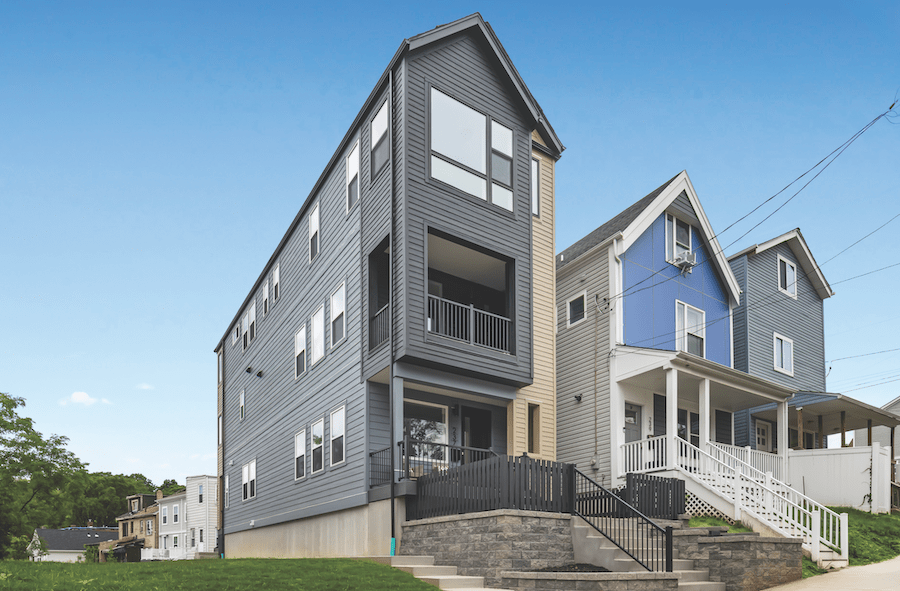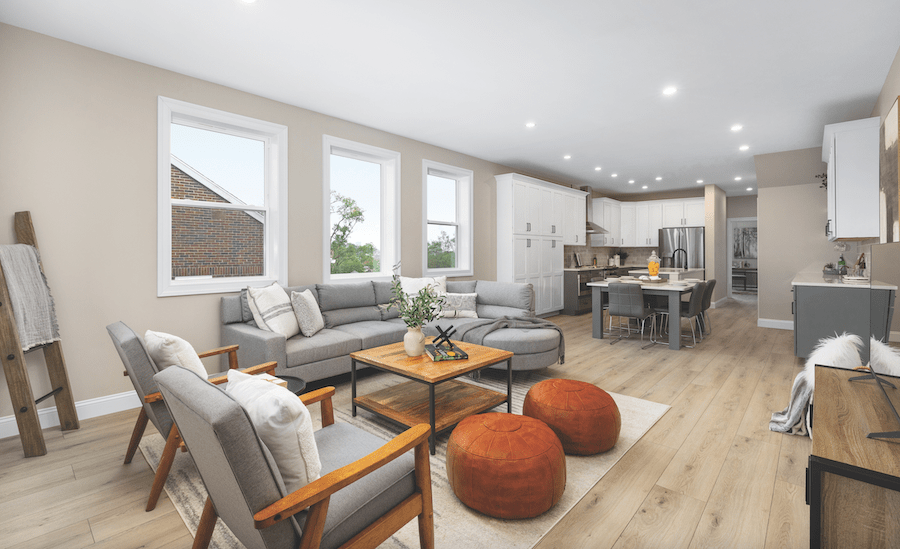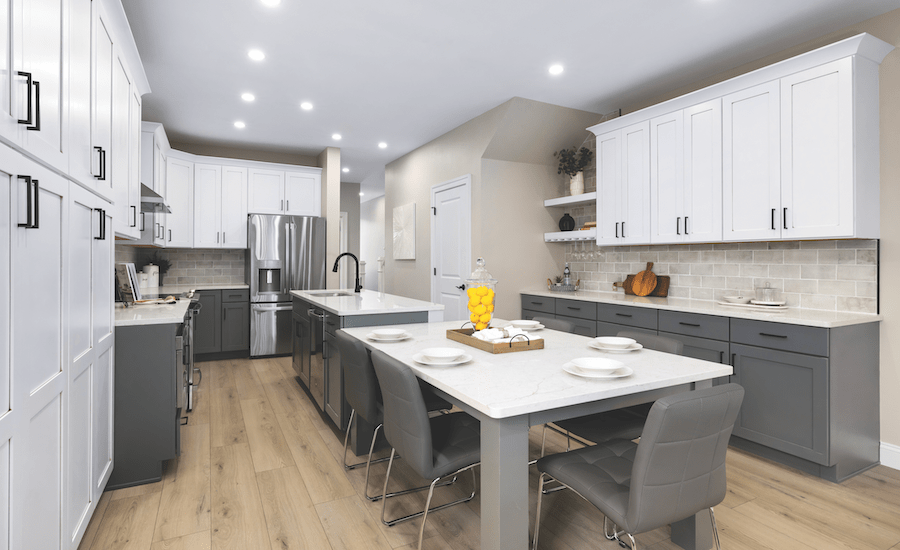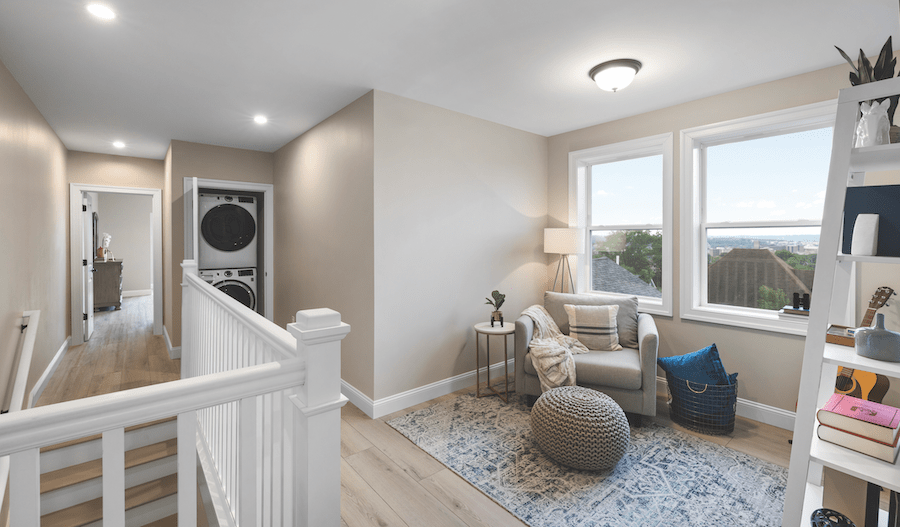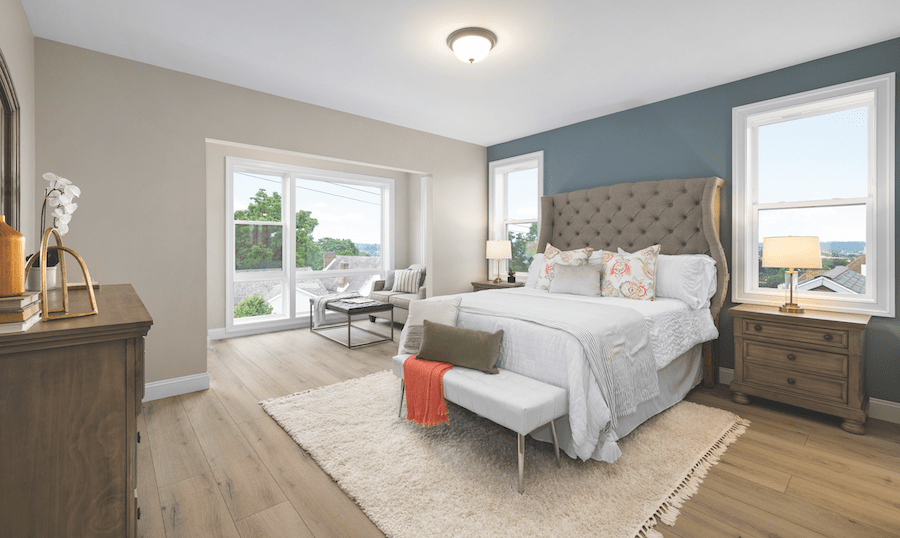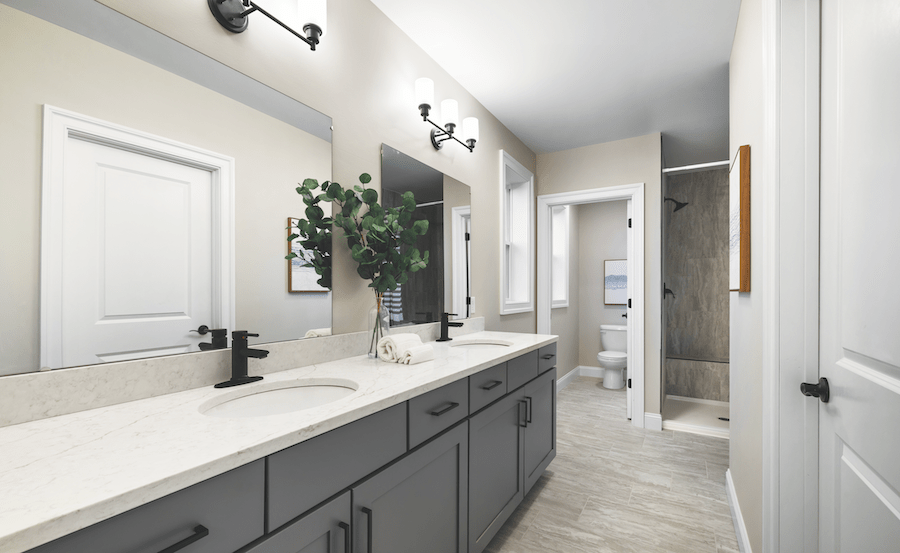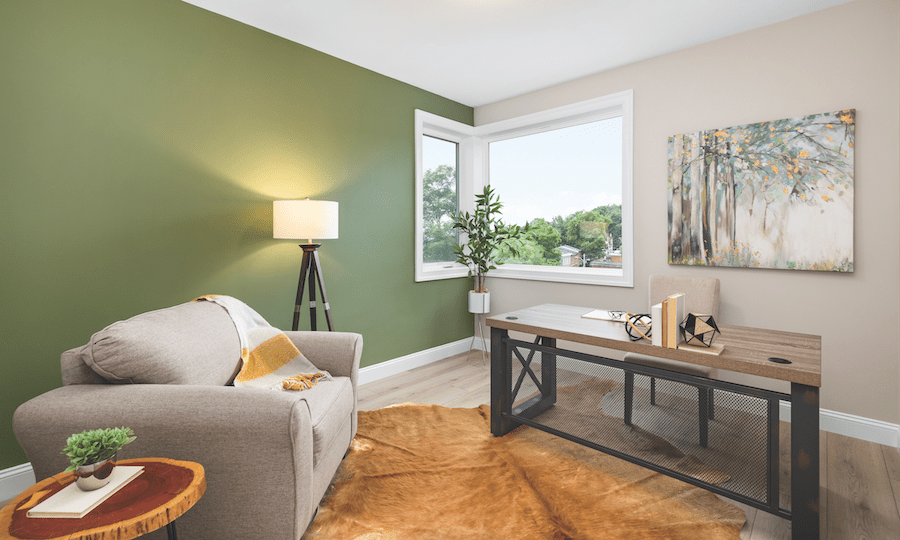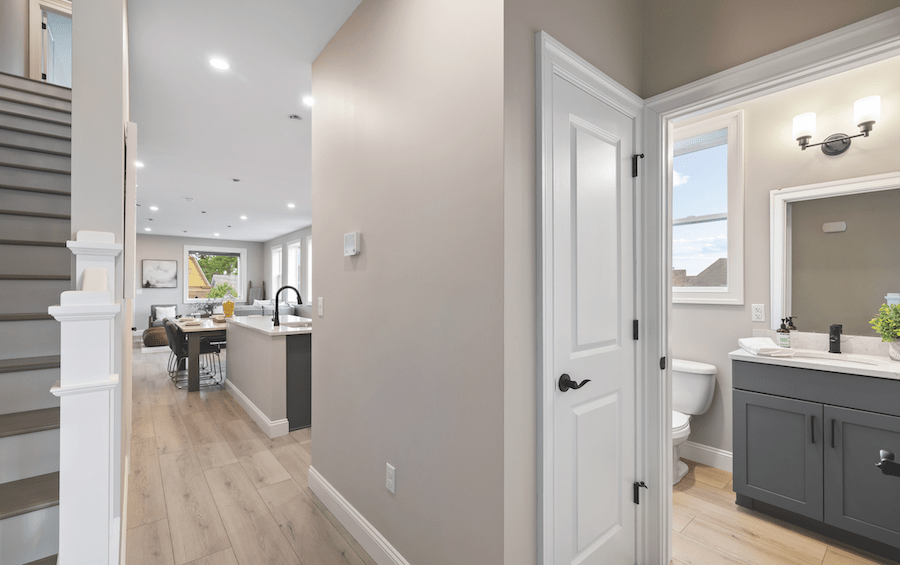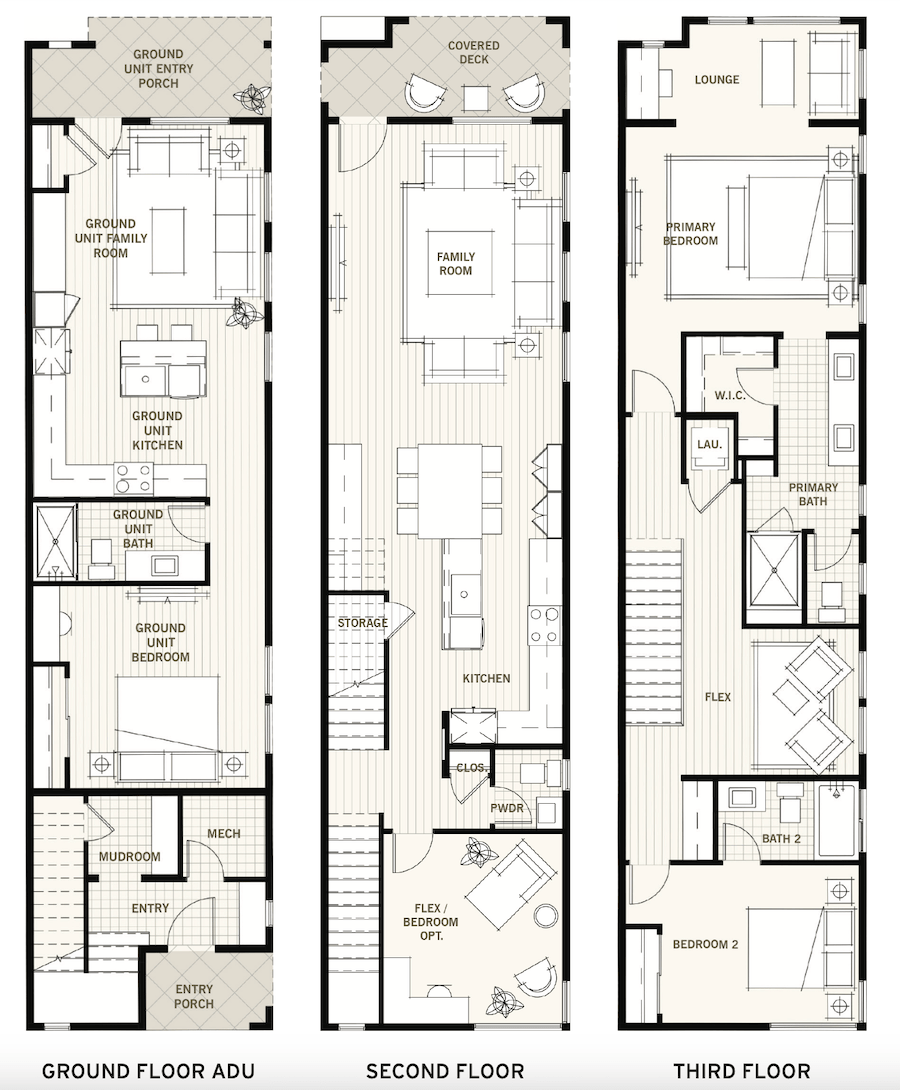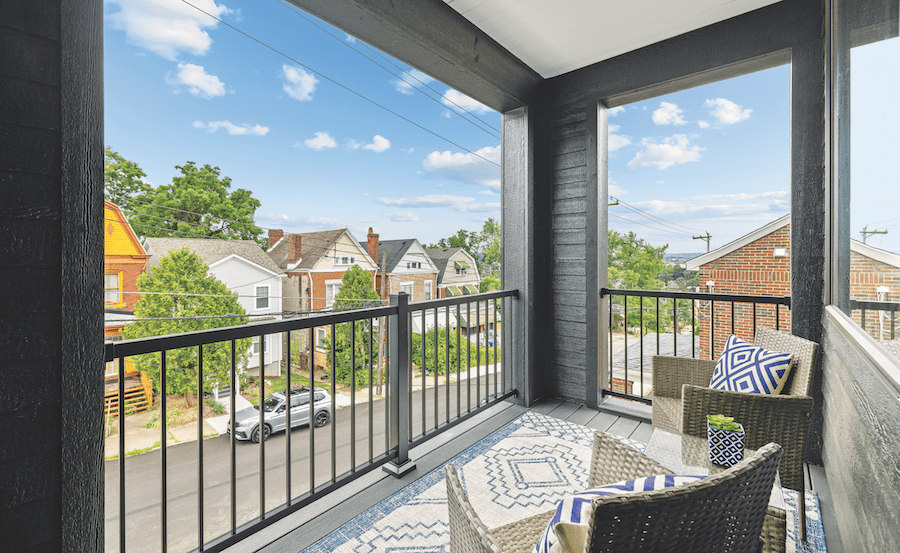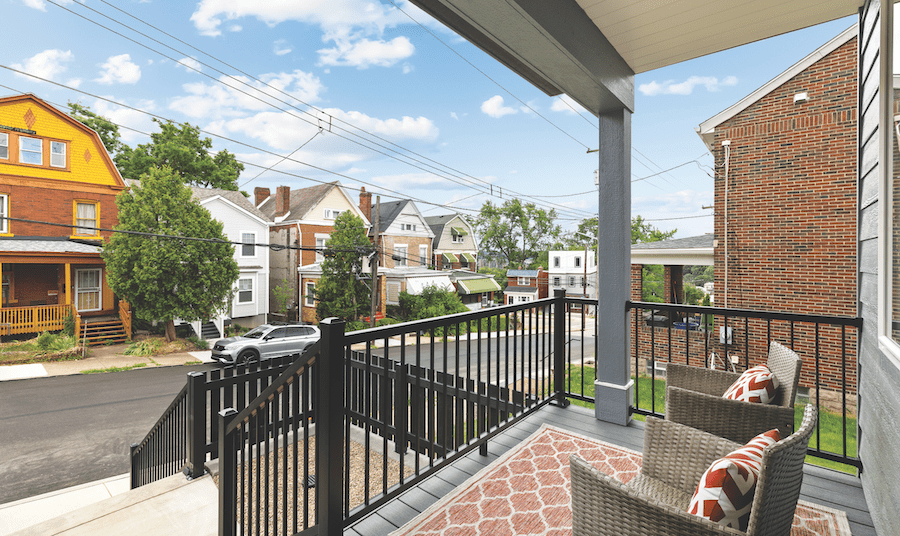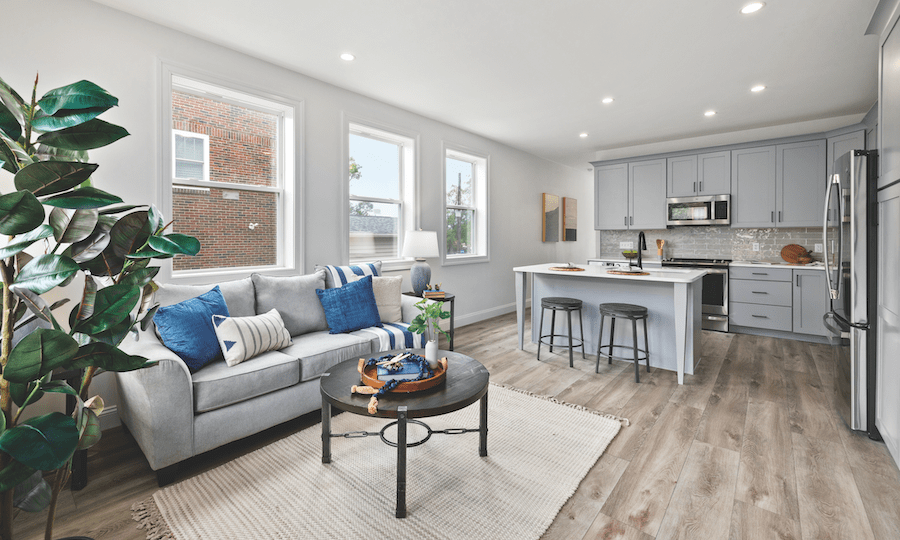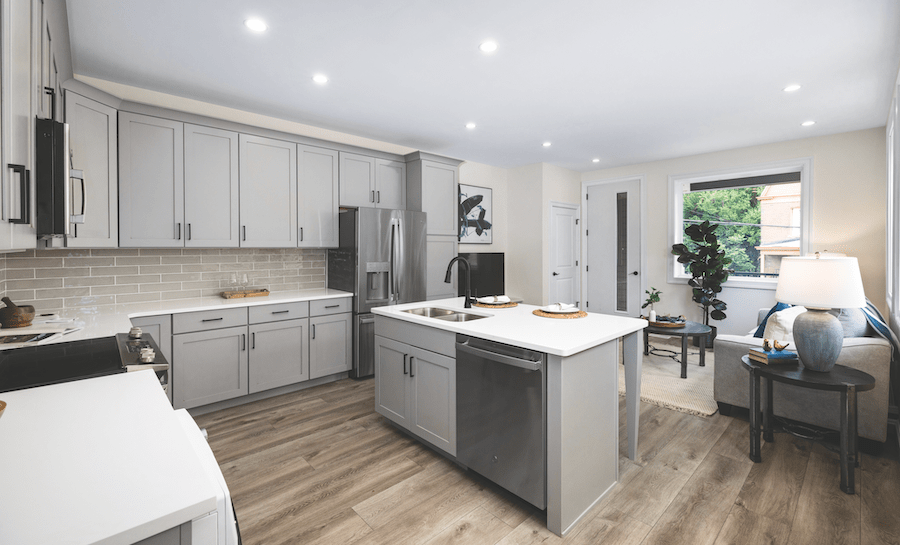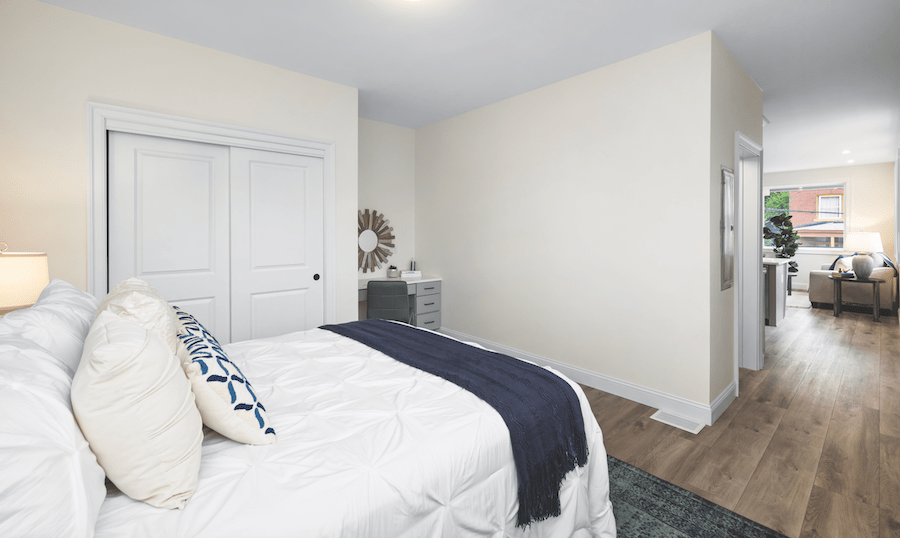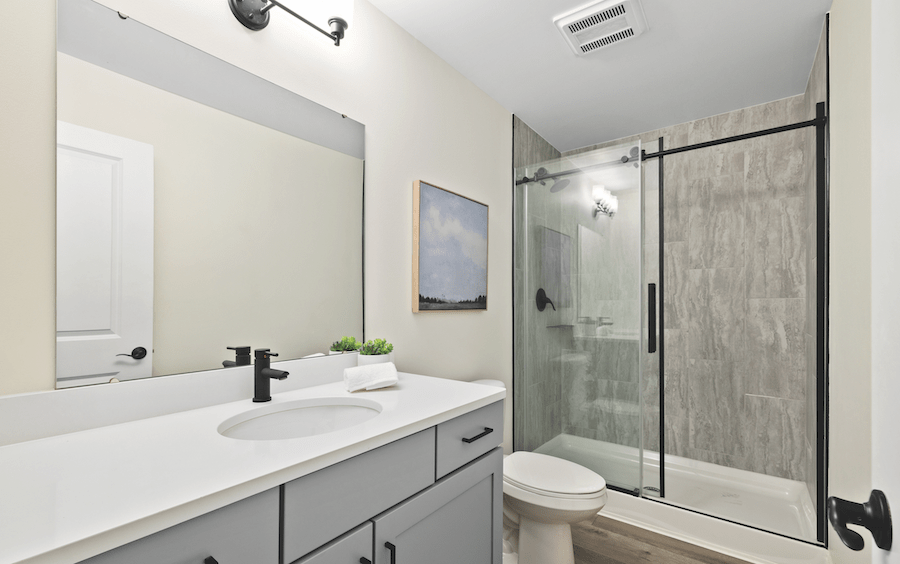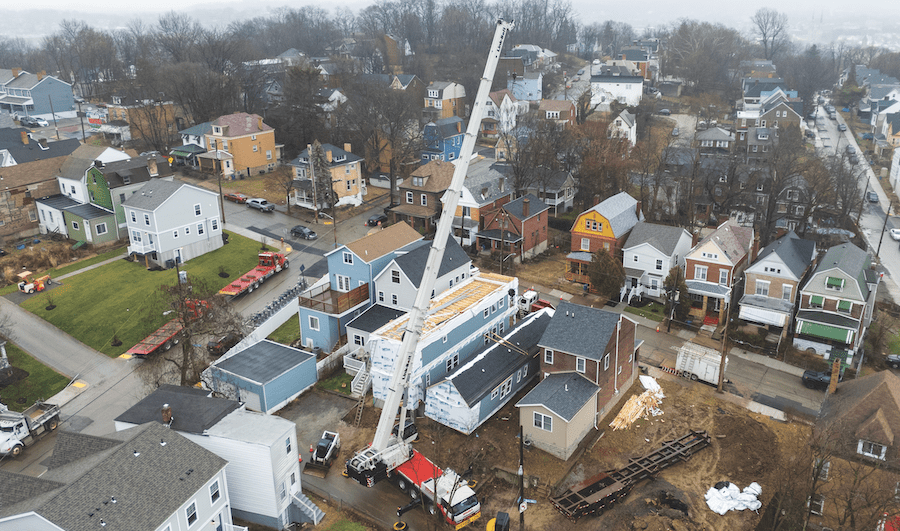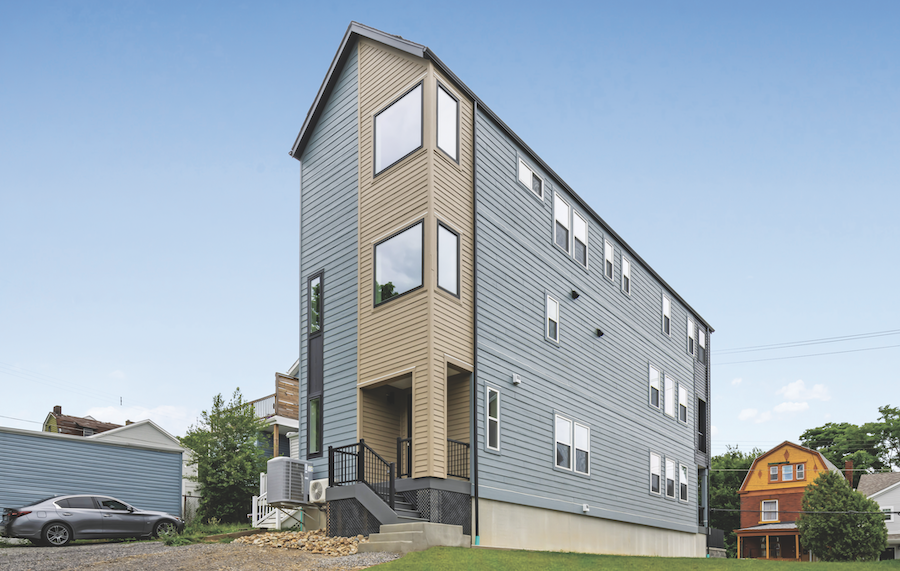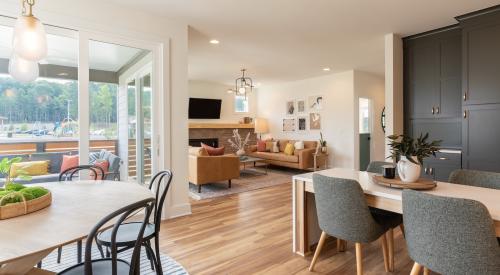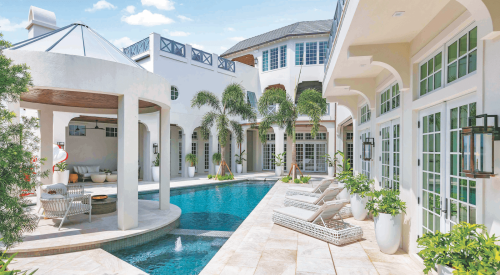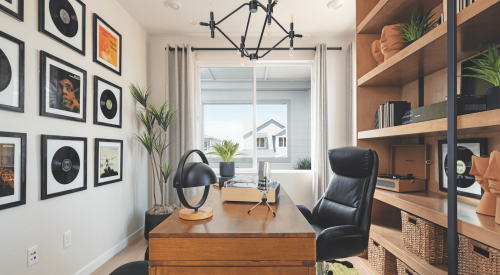When you imagine homes of the future, you might envision high-tech marvels with robot assistants and space for your flying car. In reality, they’ll likely be more sensible and responsive to changing lifestyle, financial, and social needs.
The Picket Fence Idea Home, located in a cozy neighborhood in Pittsburgh, sets that standard for the industry in its design development, construction coordination, and commitment to homebuyer preferences and environmental concerns.
A collaborative effort from the start, the home’s creation engaged a wide range of stakeholders, from consumer researchers and home designers to a housing innovation think tank and an off-site home building operation—all with a singular goal: “... to design a home that is future-proof; one that meets people where they are today while seamlessly adapting to their future needs,” says Ryan White, director of design at Dahlin Architecture | Planning | Interiors, in Pleasanton, Calif., the project’s architect.
RELATED
- Reinventing Home Building to Meet Current Challenges and Future Needs
- Living Now: America at Home Study Concept Home
- Home Design That Differentiates
The result is a three-story detached townhouse consisting of a 2,007-square-foot unit above a 660-square-foot full studio accessory dwelling unit (ADU).
But that’s just the tip of the iceberg. The Picket Fence Idea Home embodies extensive (and unique) consumer insights, as well as a commitment to occupant health and wellness, reducing carbon emissions, and improving indoor comfort through new but proven technologies, plus a production process that significantly cuts cycle time, materials waste, and labor—all geared toward creating a modern model for housing attainability and sustainability.
Project Specs for The Picket Fence Idea Home
Location: Pittsburgh
Size: Main house: 2,007 sf; ADU: 660 sf
Beds: Main house: 3; ADU: 1 (studio)
Baths: Main house: 2.5; ADU: 1
Architect + interior designer: Dahlin Architecture | Planning | Interiors, Pleasanton, Calif.
Builder: Structural Modular Innovations, Strattanville, Pa.
Development partner: Housing Innovation Alliance, Pittsburgh
Local architect of record: City Studio, Pittsburgh
Study co-founders: tst ink, Encinitas, Calif.; Strategic Solutions Alliance, Carlsbad, Calif.; Dahlin Architecture | Planning | Interiors
Photos: PREP Solutions
DISCOVER: An Attainable, Healthy Home for the Trail Blazers Millennial Cohort
The Picket Fence concept and the home’s ultimate design were driven first by results from the America at Home Study (AAHS), the only national longitudinal consumer study capturing early-, peak-, and post-COVID consumer perceptions of home, including consumers’ desire for increased wellness and eco-conscious living.
Of the 12 customer groups identified in the study, the design team focused on Trail Blazers, a Millennial cohort seeking social connectivity and personal well-being in a home.
“Our data show that Trail Blazers prioritize holistic wellness, so it was crucial to design a home that supports a healthier life in all ways, from the intentional use of spaces in the home to the construction methods used,” says Teri Slavik-Tsuyuki, co-founder of the AAHS and principal of tst ink, a marketing and brand strategy firm based in Encinitas, Calif.
Demand for this type of home is driven by attainability and the principle that space, material, and construction decisions must support holistic wellness across all domains. “The study’s latest findings show that wellness is more than just a design driver,” Slavik-Tsuyuki says. “It’s now a primary purchase motivator.”
“... Wellness is more than just a design driver. It’s now a primary purchase motivator.” —Teri Slavik-Tsuyuki
DESIGN: A Townhome With an ADU and Plenty of Flex Space
The AAHS data drove the project team to develop design principles that would result in a flexible, forward-thinking home suited for how Trail Blazers want to live today.
More than a year ago, members of the project team gathered at Dahlin’s San Diego office for an intensive, two-day design charrette that resulted in a consensus agreement on a preliminary set of drawings and solidified the collaborative tone for the rest of the project. “We refined design principles and planned key concepts for The Picket Fence, including deciding to deliver two homes in the same structure and nuanced floor plans with a clear focus on our consumer,” says Dennis Steigerwalt, president of Housing Innovation Alliance, a Pittsburgh-based industry think tank and the project’s development partner.
The resulting stacked two-unit concept for the home strengthens the sense of community by “fitting in” with its neighbors while advancing livability and sustainability through strategic use of products, systems, and construction methods.
Rather than traditional bed and bath counts, The Picket Fence adopts a “spaces, not rooms” philosophy, prioritizing functional areas with natural light and outdoor living spaces for better social connectivity and mental well-being. Another design principle, “square footage where it counts,” informed the inclusion of flex spaces on more than one floor. These can be adapted for work, exercise, relaxation, or even a nursery.
Rather than traditional bed and bath counts, The Picket Fence adopts a “spaces, not rooms” philosophy, prioritizing functional areas with natural light and outdoor living spaces for better social connectivity and mental well-being.
BUILD: Modular Construction Methods for a More Efficient Build
The Picket Fence team embraced modular construction to boost production, reduce construction waste, and minimize the home’s carbon footprint.
The home exemplifies the effectiveness of collaboration between design and production to achieve the efficiencies of off-site home building. “It’s not just by happenstance that you come out of a design charrette with something that you only have to fine-tune before going into production,” says Eric Newhouse, VP of Innovation for Structural Modular Innovations (SMI), which built the home’s three modules (one for each level) in its Strattanville, Pa., factory. “It was an ideal, if not unique, example of collaboration where creative ideas and design intent were aligned with buildability.”
Case in point: After consulting with the builder, Dahlin’s Ryan White reduced the length of each module by a foot so that all three modules would fit on SMI’s production line and therefore would be completed and ready to ship and assemble simultaneously, maximizing overall productivity.
And while SMI also was charged with meeting a high bar for the home’s ultimate performance, including significant carbon reduction, the company delivered the modules in about four weeks to roughly 80% completion, from siding and roofing to cabinets, countertops, and plumbing fixtures and finishes all installed and ready to be connected to services on site.
“This project demonstrates a direction that the overall industry is heading toward,” Newhouse says. “We look forward to leading the effort to deliver homes like this at scale.”
LIVE: The Picket Fence Idea Home Offers Flexible Living Arrangements and a Replicable Model
Attainability was also an important deliverable. And with two units in one structure, The Picket Fence succeeds in offering affordability and supply by increasing density, as well as creating more diverse housing options.
The two-home solution supports various living arrangements: Owners can live in one unit while renting the other or use the ADU as a guest house or office. It’s also ideal for multigenerational households—a growing need as more young adults choose to reside with their parents and families take in aging loved ones.
As such, The Picket Fence aims to be a replicable model nationwide, offering an innovative approach to alleviate the housing shortage and create greater housing attainability while accommodating people where they are at different life stages.
As builders and architects look toward the future, consumer-data–driven design, commitment to wellness, environmental impact and attainability, and the willingness approach home building differently will be a distinct competitive advantage.
“Modern homebuyers need homes that are more than just shelter,” White says. “At its heart, a home needs to be smart, flexible, and designed with the people who will live in it in mind.”
Katy Biggerstaff is VP at NewGround Public Relations & Media, a communications agency serving the real estate industry, and a content partner for The Picket Fence Idea Home.

